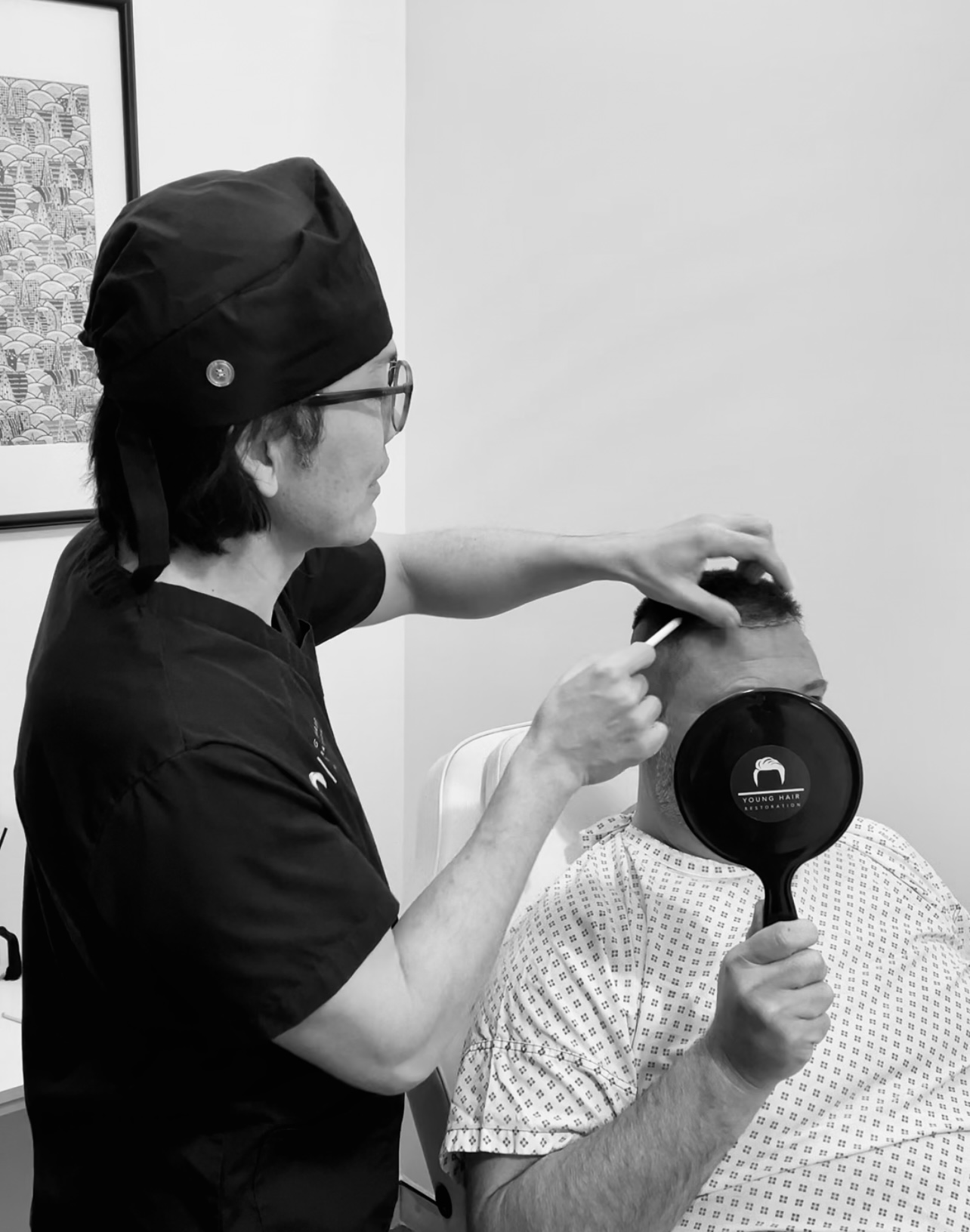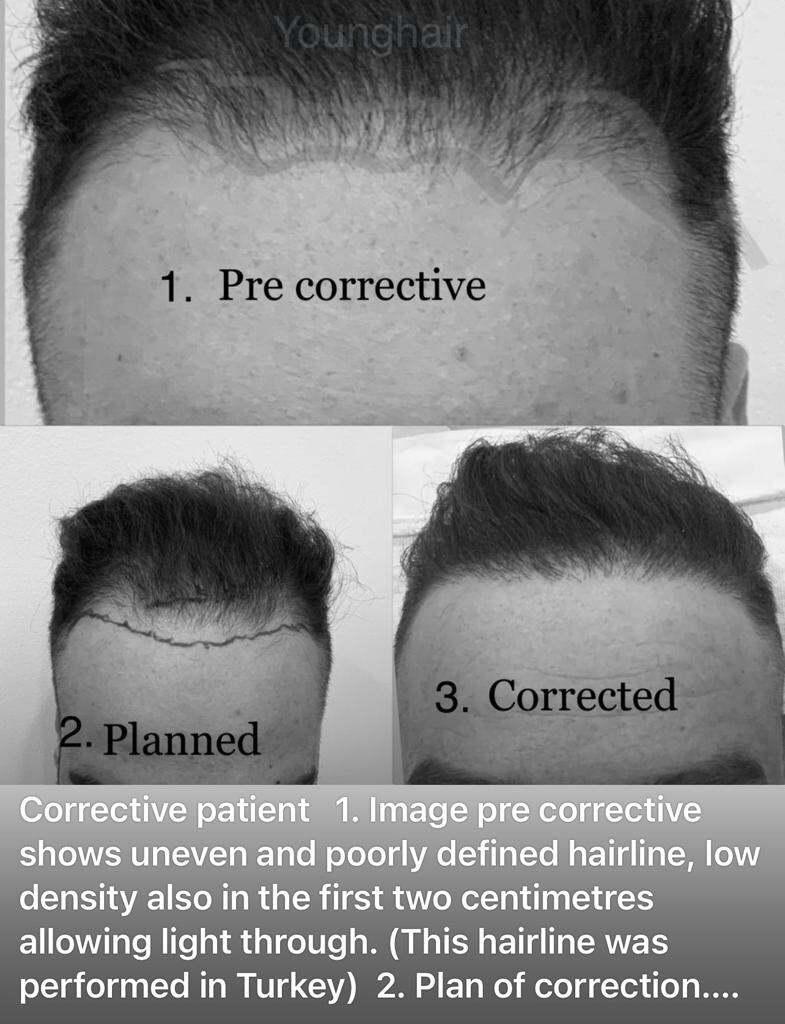Forever Young, "Dr Young recently sat down with Maxim Magazine to share his expert insights on the future of hair restoration"
THE BALD TRUTH
Hair loss, no matter your age or background, is the one issue that unites men in shared frustration. By 50, over 70% of men will experience some form of hair loss. Whether it’s slow thinning, sudden shedding or a full-blown retreat of the hairline, it remains one of the biggest hits to male self-esteem. But we’ve come a long way from the days of denial, hats or shaving it all off.
Thanks to two decades of medical breakthroughs, hair loss can now be treated, reversed and, in many cases, fixed for good. From topical solutions like Rogaine to prescription meds and surgical procedures like Follicular Unit Excision (FUE), there’s now an entire playbook available. And leading the charge in Australia is Dr Wayne Young, founder of Young Hair Restoration Clinic in Sydney’s Darlinghurst.
THE MAN BEHIND THE HAIRLINES
“More people are realising they can do something about their hair loss,” says Dr Young. “At Young Hair Restoration, we don’t just look at what’s happening now – we plan for what’s coming next.”
Originally from South Africa, Dr Young earned his medical degree at the University of Witwatersrand before sharpening his surgical skills at London’s Royal Free and Royal Marsden hospitals. After relocating to Sydney, he trained extensively in General and Plastic Surgery, where he noticed something surprising.
“Hair and eyebrow procedures weren’t evolving the way the rest of plastic surgery was,” he recalls. “They were outdated. That’s what pushed me to specialise in modern, aesthetic hair restoration.” Since 2015, Dr Young has focused exclusively on FUE hair transplants, which involve extracting individual hair follicles – usually from the back of the scalp – and implanting them where needed. The results are natural, undetectable and most importantly, permanent.


THE SOCIAL MEDIA TRAP
These days, TikTok and Instagram are filled with guys flying to Türkiye for low-cost hair transplants. It’s helped destigmatise the procedure – but Dr Young warns there’s a darker side. “What you don’t see are the botched jobs,” he says. “Too-low hairlines. Unnatural density. Patchiness. Scarring. Overharvested donor areas. Or worse – post-op infections from poor hygiene.”
He estimates that up to 30% of his current cases are corrective work after patients returned from overseas with disappointing (or dangerous) results. “I call it Sustainable Hair Restoration,” he explains. “It’s not about quick fixes – it’s about preserving the donor area and planning for the next 20 or 30 years.” He adds that many clinics, including here in Australia, often rely on technicians to perform the surgery. “The doctor draws the hairline and walks out. You get a cookie-cutter result. At Young Hair Restoration, you always meet with me, and it is me who performs your procedure.” Dr Young also warns of the rise of “Ghost Clinics” in Australia – centres that market a doctor but deliver little more than a sales pitch and fly-in-fly-out technicians. “Hair restoration is medical. You only get one donor area. You can’t afford to get it wrong.”

THE CONSULTATION THAT MATTERS
According to new Medical Board of Australia guidelines, the initial consultation must be conducted by a doctor – not a salesperson. “At Young Hair, I personally assess every patient,” Dr Young explains. “We’re not selling hair – we’re offering a long-term strategy.” For younger men, that often means starting with medications or stabilising therapies before jumping into surgery.
“Eighty per cent of my transplant patients are over 35,” he adds. “That’s when hair loss has usually settled, and we can make lasting decisions.” Patients also undergo detailed scalp examinations using a dermatoscope, and in some cases, Dr Young uses TrichoTest, a DNA-based genetic test he introduced to Australia, which helps tailor the best medical approach for each person.
NO SHAVE, NO PROBLEM
In a world where appearances matter more than ever, many patients can’t afford the downtime of a traditional transplant. Enter Dr Young’s signature: the Total Unshaven FUE hair transplant. “About 40% of the procedures that I perform are totally unshaven,” he says – “no buzzcut, no obvious signs”. The approach has made his clinic a favourite among public figures, CEOs and media personalities who want privacy and precision. “I’ve always believed in the less is more philosophy. Natural results, minimal disruption – that’s been my cosmetic medicine ethos for over 20 years.”
IS HAIR REALLY THAT IMPORTANT?
Let’s not forget: some guys go bald and become icons. Jason Statham, anyone? “Absolutely, baldness can work,” says Dr Young. “But hairlines frame the face. They shape your appearance, affect your symmetry and even protect the scalp from UV.” It’s not just about looks – it’s about identity. Even Donald Trump’s hair became a global talking point when his doctor confirmed he was using finasteride, a common medication for hair loss. Suddenly, it wasn’t a joke – it was mainstream. “Hair restoration isn’t about vanity,” Dr Young concludes. “It’s about self-care, confidence and taking charge of how you feel in your own skin.”
WANT TO LEARN MORE?
Dr Wayne Young hosts the Young Hair podcast, sharing deep dives into treatments, techniques and real-life stories of restoration. For more, visit younghair.com.au
By REILLY SULLIVAN
https://www.maxim.com.au/archives/24299